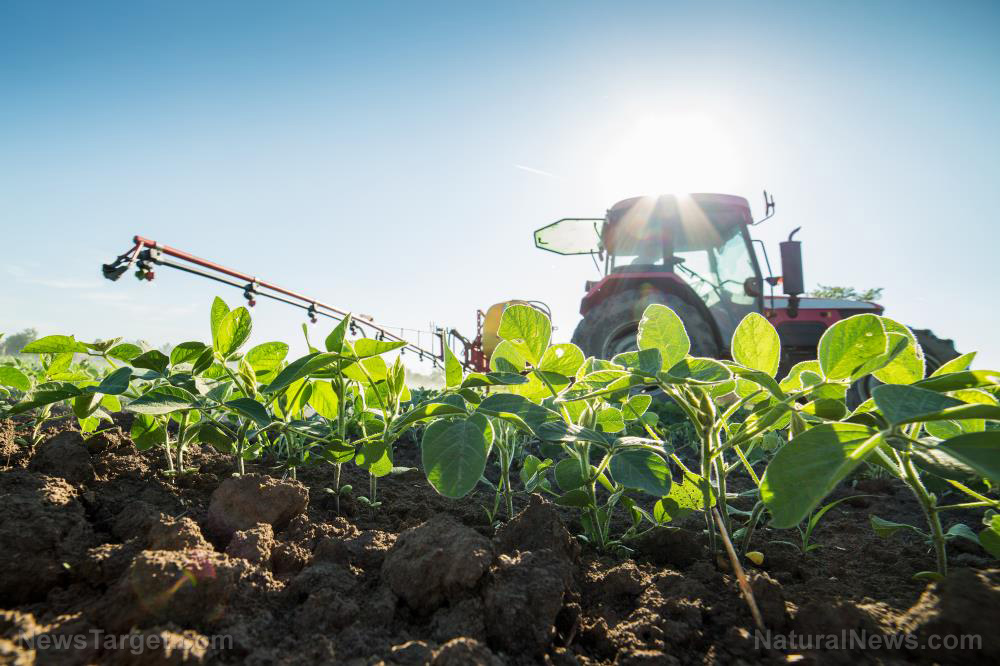 Parler
Parler Gab
Gab
- A May 2024 solar storm caused over $565M in agricultural losses, crippling GPS-guided farming across the U.S. Midwest.
- The Gannon Solar Storm disrupted GPS signals by up to 230 feet, triggered by solar particles heating the ionosphere into a plasma "wall."
- Farmers lost an average of $17,000 per farm, with 70% of U.S. croplands relying on GPS for precision planting.
- Researchers warn a Carrington-class solar storm would render GPS unusable, requiring urgent forecasting and infrastructure upgrades.
- The next solar maximum in 2025 raises risks, urging farmers and policymakers to bolster preparedness strategies.
How solar storms decimate farming efficiency
Farmers in Nebraska, Kansas and Missouri described their GPS-guided machinery as “possessed” as the Gannon storm surged in May 2024. GPS relies on precise satellite signals to map fields, plant seeds in straight rows and optimize resource use. When solar particles struck the ionosphere — the electrically charged layer of Earth’s atmosphere — the resulting turbulence distorted signals, creating errors of up to 230 feet. Terry Griffin, a Kansas State University economist, noted that 70% of U.S. planted acres use GPS automation, leaving few alternatives when systems fail: “We no longer use physical road markers. Without GPS, machinery the size of our current equipment can’t be manually navigated.” The damage was staggering. Relatives of farmers reported losses exceeding $17,000 per farm, with delays in corn planting threatening harvest yields. Nationwide, the total loss exceeded $565 million, a figure that underscores the fragility of tech-reliant agriculture.The science of solar chaos: How storms sabotage technology
Researchers from Boston University uncovered the storm’s mechanism: a wall of ionospheric plasma, triggered by a surge of solar particles, warped GPS signals. By analyzing a network of 100 high-accuracy GPS receivers — a system originally meant to track tectonic shifts — the team revealed unprecedented disruptions. Lead scientist Waqar Younas explained, “Solar storms create erratic plasma densities in the ionosphere, scrambling signal paths.” The resulting errors persisted for days. While the peak disruption lasted six hours on May 10, lingering auroras funneled charged particles through disrupted magnetic fields, exacerbating errors to 30 feet for 48 hours. These fluctuations also affected aviation, as jetliners lost altitude precision, and energy grids faced voltage fluctuations.Lessons from history: The Carrington Event and 2025’s solar maximum
The Gannon storm, though severe, was tame compared to the 1859 Carrington Event, which sparked telegraph fires worldwide. A recurrence today could have catastrophic consequences. Toshi Nishimura, a Boston University space physics professor, warned: “A Carrington-sized storm would generate GPS errors so massive, signals would be unusable anywhere.” With the sun’s solar activity predicted to peak in 2025, scientists urge proactive measures. Historical precedents like the 1989 Quebec blackout — a geomagnetic storm-induced grid collapse — offer grim reminders of interconnected vulnerabilities.Preventing the next crisis: High-tech solutions and policy shifts
Researchers propose real-time space weather forecasting paired with AI-driven models to predict ionospheric disruptions. “By anticipating turbulence,” Younas said, “we could dynamically adjust GPS systems or alert farmers.” Agriculture experts advocate for analog backup systems and multi-source navigation tools, such as hybrid GPS-cellular networks. Meanwhile, the federal government’s National Weather Service is expanding solar monitoring to mitigate risks.Toward a weatherproof future
The Gannon Solar Storm was a wake-up call for a world increasingly tethered to technology. As farmers adapt to climate shocks, solar storms add another layer of unpredictability. “This isn’t just about satellites,” said Griffin. “It’s about our entire food production ecosystem.” With the solar maximum looming and technology advancing faster than safeguarding measures, the path forward demands innovation — and humility in the face of nature’s fury. Sources for this article include: LiveScience.com MichiganFarmersNews.com GadgetShint.in8 Essential safety tips for a fun and injury-free fireworks season
By Zoey Sky // Share
Netanyahu signals more strikes on Iran over “surviving” uranium stockpiles
By Cassie B. // Share
Governments continue to obscure COVID-19 vaccine data amid rising concerns over excess deaths
By patricklewis // Share
Tech giant Microsoft backs EXTINCTION with its support of carbon capture programs
By ramontomeydw // Share
Germany to resume arms exports to Israel despite repeated ceasefire violations
By isabelle // Share










